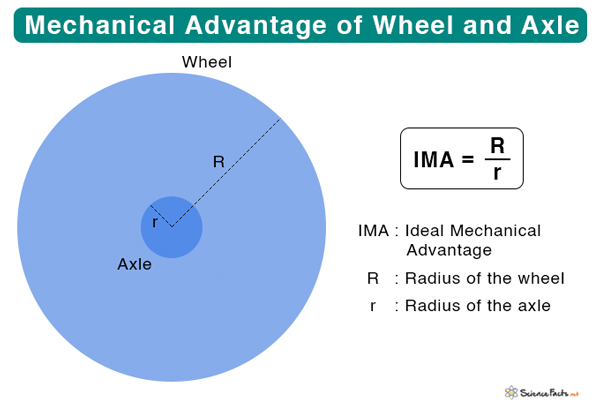Who Invented the Wheel and Axle Archeological evidence shows that the first wheel and axle existed in Mesopotamia during the Bronze Age around 3500 B.C.
How Does Wheel and Axle Work
Mechanical Advantage of Wheel and Axle
Types and Examples of Wheel and Axle
Applications of Wheel and Axle
IMA = R/r Where, R: Radius of the wheel r: Radius of the axle For the equation, it is clear that more mechanical advantage can be gained when the wheel is large. Therefore, by varying the radii of the wheel and the axle, any amount of mechanical advantage can be achieved. The radius of the wheel can be thought of as the effort arm of a lever. The longer the effort arm, the higher is the mechanical advantage.
1. Force Applied on the Axle
In this type, the force is applied to the axle and transmitted to the wheel, rotating rapidly. Examples: Bicycle, car tires, Ferris wheel, electric fan, analog clock, and winch
2. Force Applied to the Wheel
In this type, the force is applied to the wheel, causing it to rotate. The wheel applies a greater force on the axle, which then rotates over a shorter distance than the wheel. Examples: Screwdriver, drill, windmill, water wheel, doorknob, pizza cutter, and skateboard
Motor vehicles run on themWindmill mills grains using themWater turbine uses them to generate electricityClay potters use them to make clayConstruction crane uses them to lift objectsScrewdriver uses them to drive a screw into a surfaceDoorknob operates on them to open a doorA bicycle uses them to move forwardFerris wheel uses them as a means of entertainmentAn electric fan runs on themWheels with teeth, known as gears, are used in many machines in a factory


